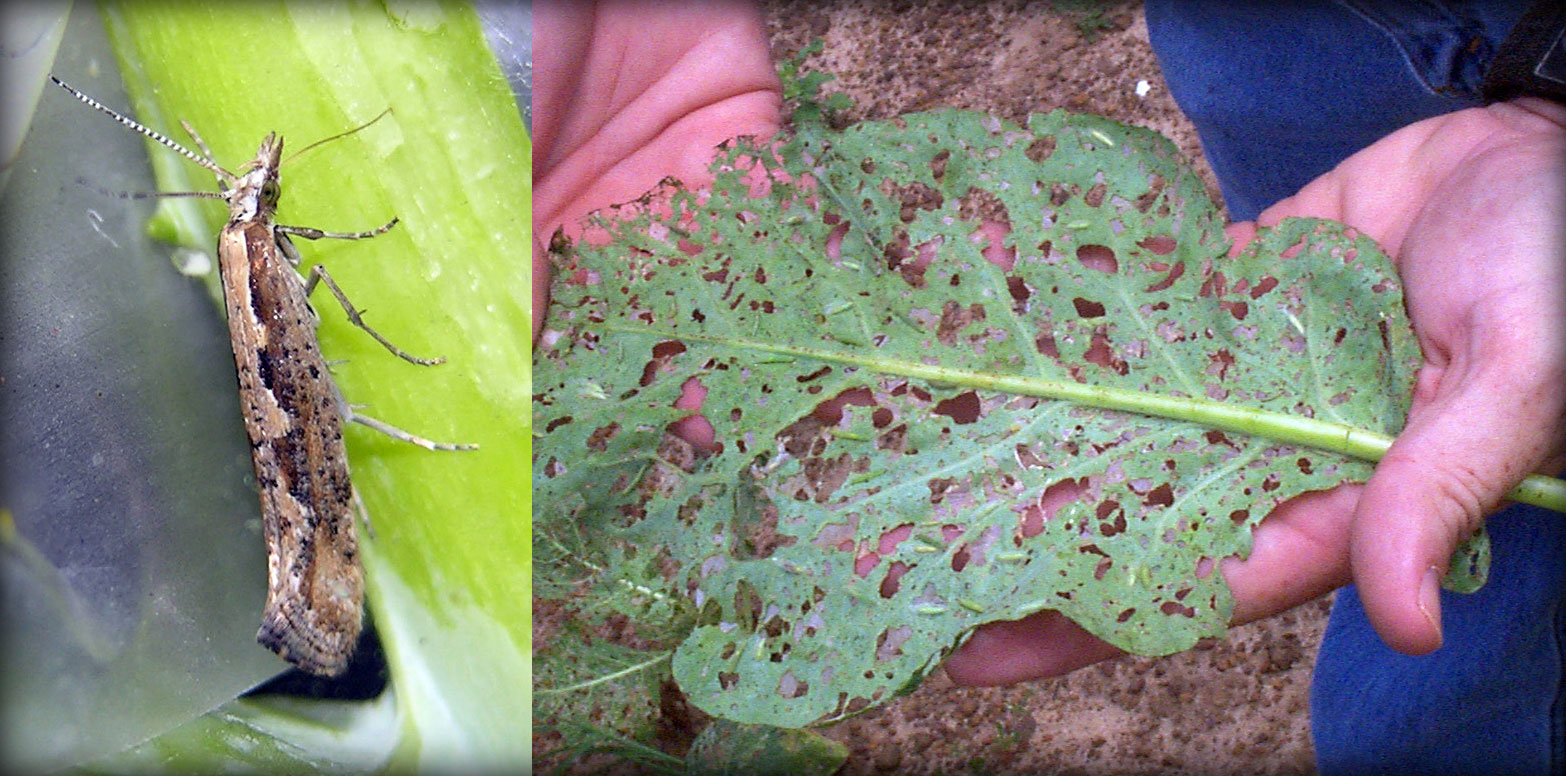-
Riley, David G
New Research into Diamondback Moth Insecticide Resistance
Summary
Insecticide resistance in commercial vegetable crops continues to be a critical issue for maintaining vegetable productivity in the State of Georgia. Through last year and up to the present time we have been monitoring insecticides for their effectiveness for the control of the diamondback moth (DBM), a key pest in Brassica crops like cabbage, collards, broccoli, cauliflower, and turnip greens. Critical dose bioassays that we provided were needed to evaluate insecticide resistance levels at individual farms in order to recommend the best alternative treatments and insecticide rotations. We developed a proposal for toxicological and molecular investigations of resistant DBM populations in 2017 which was funded by USDA CPPM in 2018.
Situation
Commercial vegetable crops in Georgia currently rely heavily on insecticides to maintain a high level of productivity in the face of the severe insect pest pressure that occurs each year in the South. Unfortunately, the over use of insecticides with a single mode of action can create pest problems through the selection for resistance. This has happened with diamide (Group 28) and other insecticides for the control of the diamondback moth (DBM), Plutella xylostella, in Brassica crops like cabbage, collards, broccoli, cauliflower, and turnip greens. Also, the lack of reliable information on resistance levels can lead to problems with pest control efficacy, failing vegetable production systems and environmental hazards from excessive pesticide use. Current critical dose bioassay data for diamondback moth are critical information to vegetable growers in the State and site specific information is the most useful to pest control operators.
Response
The Vegetable Entomology Project at Tifton conducted critical dose bioassays in cabbage and collards in 2017 and continuing into 2018, which consisted of leaf dip bioassays to estimate responses for DBM to maximum field rates of approximately 10 major insecticide modes of action per field sample location. This was conducted on a field by field basis in counties where the insecticide-resistant DBM outbreak were very severe to provide the grower at that field site a short list of effective insecticide, and more broadly modes of action, that still provided control of DBM. All bioassay data were made available to the growers through the specialists and county agents so that growers could also avoid the use of insecticides to which the DBM had already become resistant. We began to generate LC50 response data for DBM larvae for selected insecticides, but had to pause this effort to come up with new rearing protocols to maintain insect populations in high enough abundance in the laboratory colonies for these experiments. This toxicological work is still on-going and we have added a new research effort to identify genetic factors responsible for resistance that could potentially lead to PCR tests of DBM larvae to rapidly determine resistance to multiple modes of action for each sample population. This would greatly reduce the need for maintaining large laboratory DBM colonies which currently requires major laboratory space and labor commitments.
Impact
Insecticide resistance management will be a critical issue for Brassica crop in the Southeast in the next few years. We provided direct pest management benefit to farmers participating in the program and provided general pest management information to the state at large. Our 2017 effort lead to the successful funding ($322,032 over 2 years) of a USDA CPPM project entitled, “A Multi-State Approach to Quantifying and Managing Insecticide Resistance in Plutella xylostella, the Diamondback Moth, in Cole Crops”, to help mitigate this problem now and in the future in Georgia. The Brassica crop in Georgia represents over $128 million in farm gate value and most of the production is concentrated in Tift and Colquitt Counties where the resistant DBM is the most severe. We estimate that better insecticide management could improve production by 15% or over $19 million annually.
State Issue
Plant Production
Details
- Year: 2018
- Geographic Scope: State
- County: Tift
-
Program Areas:
- Agriculture & Natural Resources
Author
Collaborator(s)
CAES Collaborator(s)
- Champagne, Donald E.
- Sparks, Alton N
Non-CAES Collaborator(s)
- Smith, Hugh (University of Florida)
Research Impact

